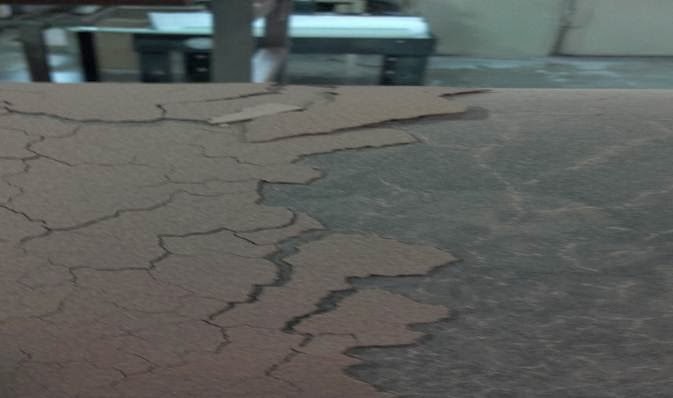
Curing is the last step to good adhesion of your Teflon™ coatings. Reaching and maintaining proper cure temperatures for a sufficient period of time to cure the coating is one of the most important factors in achieving a finish with optimal adhesion performance.
It’s important to remember that all temperatures mentioned in the Teflon™ Fact Sheets refer to metal temperatures, meaning that it’s the part itself must reach the recommended cure temperature. Ovens should be calibrated at least twice per year, and thermocouples should be used to check part temperatures. Each coating has different curing instructions, so always check the Fact Sheets first, and always follow the cure schedule very carefully.
All commonly used types of industrial ovens are used for curing Teflon™ industrial coatings. Teflon™ coating systems are not affected by the combustion products of coal gas or natural gas, so direct fired gas ovens may be used. Both batch ovens and high production conveyorized ovens are used. Conveyorized ovens must be carefully designed to give accurate and uniform temperature control since maximum conveyor speed and minimum oven length are important economic factors which operate to reduce dwell time.
CONVECTION OVENS may be gas fired, direct or indirect, or heated by electrical resistance coils. Good circulation is required for uniform heating. Convection ovens require longer time to warm up than infrared ovens, and conveyorized systems require greater floor space for equivalent line speeds.
GAS AND ELECTRIC INFRARED OVENS offer the advantages of rapid transfer of radiant energy, ability to control speed of warm-up by placement of the radiant elements and reduced dwell time. It is less effective where coated parts are complex in shape, since infrared energy travels in a straight line and the intensity of heat is inversely related to the distance (squared) from the source, so inner crevices and angles will not cure at the same rate as outer surfaces facing the source. High velocity air may be used to make the air temperature more uniform.
Ventilation of ovens is very important for the safety of workers. Ventilation is usually provided via an outdoor stack. Negative pressure should be maintained at all times with an inward draft at both the entrance and exit of the oven. Even the small amounts of decomposition products of fluoropolymers which occur at bake temperatures may cause discomfort to people in the area if the fumes are not vented to the outdoors and allowed to be diluted by the outside air.
Ovens should be calibrated at least twice per year, and thermocouples used on the parts themselves or in the oven at several locations, recognizing that air temperatures are of little value except when based on experience with a given oven and oven load over a period of time.
Factors which affect total bake time (including warm-up):
Here’s an inexpensive oven calibration tool.

OUTGASSING occurs with cast iron or cast metal substrates and can be prevented by preheating the part up to 250° F before applying the Teflon™ coating. Preheating the part will release all air that is trapped inside the substrate.

BRITTLENESS usually means the part was over-baked. When the Fact Sheet states the cure temperatures, it is referring to the actual metal part’s temperature. In order to assure that your part has reached the required cure temperature, use a thermocouple to measure the part temperature while curing.

ROUGH TEXTURE can happen when the part is under-baked. Teflon™ industrial coatings should be smooth and have a soft touch to them. Use a thermocouple to make sure the part temperature is correct. Another cause of under-baking can be poor oven calibration.